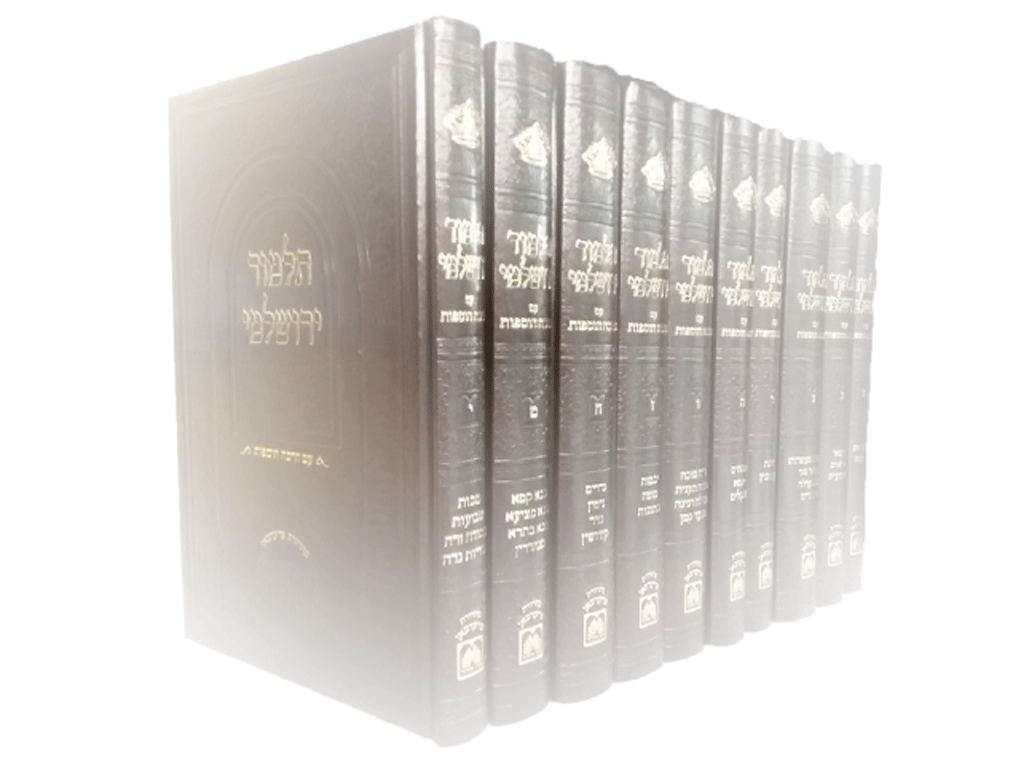All those who are learning Daf Yomi just completed Maseches Shekolim, the only volume included in the cycle from Talmud Yerushalmi. Some of the participants breathed a sigh of relief as we returned to the more familiar territory of Talmud Bavli with the study of Yoma. However, for others, their appetite was whetted for new vistas in the land of Yerushalmi. Not too long ago, the Gerrer Rebbe spearheaded a Daf Yomi for Yerushalmi and ArtScroll has been regularly issuing volumes in the English and Hebrew translations of this often unexplored Torah adventure.
Why, indeed, are there two different Talmuds and what distinguishes one from the other?
Furthermore, how did it happen that almost all scholars study Talmud Bavli and only rarely do we encounter even a great talmid chochom who is proficient in Yerushalmi?
The answers are fascinating and often lead to further commitment to the study of the Jerusalem Talmud.
First of all, what about the language and its apparent difficulty? Is it only our lack of familiarity or is there actually a reason we often simply don’t know what’s happening? Rav Yaakov Emden (Zohorei Yaavetz, page 123) writes that “the lofty level of the Yerushalmi and the incredible light that shines from it motivated its editors and organizers, our sages, to present it in a difficult language that keeps the populace from understanding its depths. The language of the Bavli is clear and accessible, as opposed to the Yerushalmi, which is quite strange and almost incomprehensible. The reason for this discrepancy is so that the Yerushalmi would be inscrutable to the nations and evil people would have no access to its riches. There is no question that this was done deliberately with great wisdom, as all the decisions made by our sages.”
The Netziv (Haamek Dovor, Shemos 34a) is even more specific in delineating the distinctions between Bavli and Yerushalmi. He likens the Yerushalmi to the first Luchos, which were given to us before we sinned with the Eigel. “The sanctity of the first,” he writes, “was greater than the second. Had the first set not been broken, it would have been [relatively] easy to arrive at final decisions by logical means and comparisons. However, once we sinned, we required greater effort and analysis of the Torah. For this, the second Luchos were preferable. This dichotomy was similar to that of the two Talmudim. The Yerushalmi’s sanctity is greater than that of the Bavli in that the Amoraim [who compiled it] were earlier (Shabbos 134b), which led them closer to the truth. To this end, the fact that it was compiled in the Holy Land elevated this Talmud to the level of the first Luchos.” This approach is reflected in Chazal, who say (Medrash Hane’elam Eichah, “Uzechor es borecha”) that the word “light” always refers to Talmud Yerushalmi.
Rav Moshe Zechus (commentary to Rav Chaim Vital’s Mevo Hashearim) adds another appellation. He reveals that “the essence of Talmud Yerushalmi is rooted in Leah Imeinu and Talmud Bavli in Rochel Imeinu. At the beginning of the exile, not so many of the sparks (nitzotzos) were hidden very deeply and the righteous were able to retrieve them in the spirit of Leah… However, later, when the pain of the exile deepened, the secrets could not be brought forth on the same level, leading to the statement of the Talmud Bavli itself (Sanhedrin 24a) that the posuk in Eichah of ‘He placed me in darkness’ refers to Talmud Bavli.”
Now, while all of this is beyond my understanding, it seems clear that the Yerushalmi retains secrets of the Torah beyond those permitted to Talmud Bavli. The Chidah (Midbar Kadomos, ches, No. 2) adds that “the earlier generations were comprised of more elevated souls who were able to plumb the depths without tremendous debate and argumentation.” The Chidah elsewhere (Sheim Hagedolim, seforim taf, No. 56) attributes the Rambam’s lofty soul to his connection to the Talmud Yerushalmi. Rav Yosef Shaul Nathanson (commentary to Aggados, Yoma 9a) also understands the darkness of Talmud Bavli as resulting from the doubts that emerge from pilpul and much machlokes, unlike the majority of the Yerushalmi.
All of this reminds us that our primary learning must be in Talmud Bavli, because this is closer to our level of understanding. On the hand, as the Gerrer Rebbe reminded us, there is much to be gained from allocating some time to the grand holiness and esoteric secrets of Talmud Yerushalmi as well. May we merit mastering both Talmudim, im yirtzeh Hashem.








